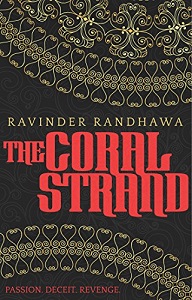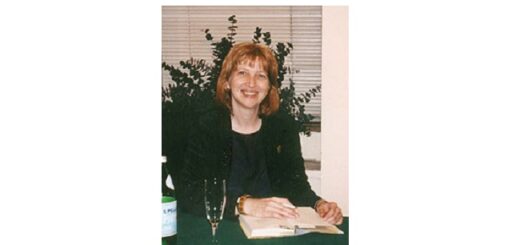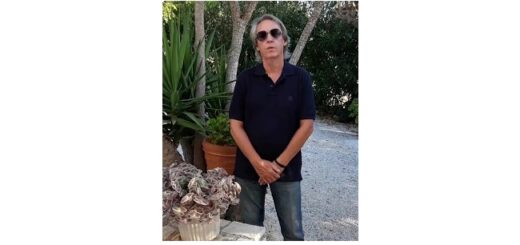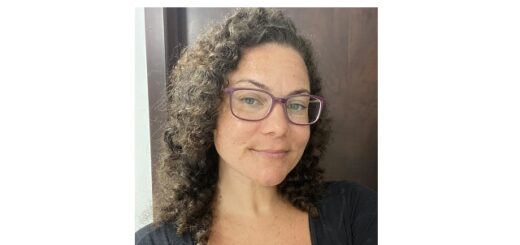The Writing Life of: Ravinder Randhawa
Ravinder Randhawa
This week on ‘The Writing Life of:‘ I am thrilled to be interviewing author Ravinder Randhawa. Ravinder will be sharing with us detail about her writing life, telling us all about her latest book ‘The Coral Strand’, which was released on 25th January 2016, and answering a few fun questions.
So without further ado I’ll hand you over to Ravinder. Post contains affiliate links.
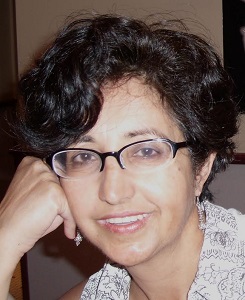
Ravinder Randhawa is the acclaimed author of the novels Beauty and the Beast (YA), A Wicked Old Woman, The Tiger’s Smile and the short story collection Dynamite. She’s currently working on a trilogy: The Fire-Magician. Ravinder was a Royal Literary Fund Fellow at Toynbee Hall, Queen Mary’s University, the University of London, and founded the Asian Women Writer’s Collective.
Ravinder was born in India, grew up in leafy Warwickshire, now lives in London and agrees with Samuel Johnson’s saying (though of course, in a gender non-specific way) ‘…if a man is tired of London, he is tired of life.’ Loves good coffee and really good thrillers.
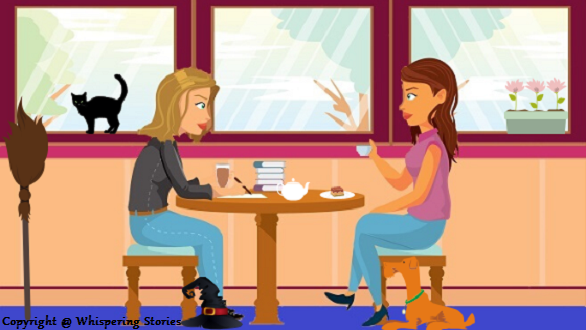
1) As a child what did you want to do when you grew up?
A ballerina of course, twirling around the stage in a sparkling tutu. As well as: being a vet, air-hostess, actor, Super-Woman, Prime-Minister – – and a dozen other glorious professions.
2) Who were your favourite childhood authors?
This is always a difficult question because there were so many. I loved reading the classics, such as The Secret Garden, Anne of Green Gables, Oliver Twist, Heidi, Treasure Island, What Katy Did, and so on.
If a writer hooked my interest, then I’d get obsessive and read everything by them. Some of those writers were: Enid Blyton, Elinor Brent-Dyer (Chalet School stories), Rosemary Sutcliffe (Roman Britain stories, The Eagle of the Ninth etc.) Joan Aiken (The Wolves Chronicles ), Jane Austen and Roald Dahl.
3) At what point in your life did you realise you wanted to be a writer?
It was always there at the back of my mind. I may have fantasised about other careers, but that quiet knowledge never faded.
4) How did you go about following that dream?
I was always scribbling – as a lot of writers do: fan-fiction, bits of stories, plays, poems, articles. Looking back on it, I see that it was a way of trying out different forms to find out what kind of writing I really liked.
A school friend and I used to write stories semi-jointly: she’d write a bit and give it to me, then I’d write some, and so on. We’d carry on till the story got unwieldy, totally confused, or one of us decided to kill off all the characters.
In my twenties I worked at several different jobs (teaching, admin, community work, shop assistant etc.) which was a really enriching period; I learnt a great deal about the world and people. But there came a time when I decided that writing had to be the priority.
Wanting to be a writer doesn’t mean anything, till you start sitting down, day after day, trying to fill those blank, numberless pages. Till you start to learn about structure, editing, revising, developing; as well as the subtleties and nuances which add to the texture and depth of a novel or short story.
5) What is your writing day like? Do you aim for a certain amount of pages or words before you stop for the day?
I can’t set targets for pages or words. When problems come up, it can take time to think of solutions or the next developmental step. I certainly don’t believe in ‘writer’s block.’ As far as I’m concerned it just means that the writer’s reached a stage where she, or he, has to dig deeper, be more inventive and thoughtful.
6) Did you ever consider writing under a pseudonym?
Not seriously. Some writer friends and I have joked about writing a book called Fifty Shades of Brown under the collective pseudonym of E. L. Jain.
A publisher once asked if I’d be prepared to shorten my name, but that felt intrinsically wrong. Names are like our connective tissue to the outside world and provide a sense of who we are. Friends and family may use shortened versions or nick-names, but for work, it was important to me, to keep my name intact.
7) Do you have any strange habits before starting, or whilst in the midst of writing?
None that I know of.
8) Do you write longhand, typewriter, or on a computer?
Computer.
9) How many books have you written? Do you have any unpublished work?
I’ve written three novels, a collection of short stories, articles and blogs. There’s always unpublished work sitting in a drawer, waiting for some TLC.
10) Are you a plotter or a pantser?
A bit of both.
11) Do you read all the reviews left for your book(s)?
No, I don’t read all the reviews: “That way madness lies” as King Lear said.
I have received a few negative ones, and they’re always difficult to read, but in the end, you have to put them behind you and carry on. I feel incredibly lucky and privileged to be able to do the work I love.
Concerning your latest book:
Publisher – Matador
Pages – 312
Release Date – 25th January 2016
ISBN 13 – 978-1785890680
Formats – ebook and paperback

From English winters to Indian summers. From the cold streets of modern Britain to the glamorous, turbulent and impassioned world of 1940’s Mumbai.
Each year, Sita makes a mysterious journey to the Mausoleum, the place of dark memories and warped beginnings. She goes to spy on Emily and Champa, the strange ‘guardians’ she once escaped, and on whom she had taken a daring revenge. This year proves to be fatefully different… This year, the terrible secrets of the past are starting to emerge; secrets that inexorably link the three women to each other, to the grey-eyed stranger Kala, and to an altogether different world – the glittering, violent and passionate world of 1940’s Mumbai.
Ravinder Randhawa’s women, caught in a desperate fight for survival, cross taboos and forbidden lines in this richly plotted novel, imbued with fascinating historical detail, and the beauties of place and period. Readers of modern and historical novels alike will enjoy Randhawa’s evocative portrait of the compelling relationship between Britain and India, which continues to enthral and engage us.
12) How long did it take you to get from the idea’s stage to your date of publication?
It’s really difficult to pin this down, because the work evolves as the writing progresses. In addition there’ll be other work, such as articles or talks, which will intervene and need to be completed within a time frame. Oh, and let’s not forget Life, which has no respect for timetables or deadlines.
13) How did you come up with the names for your characters?
—Author missed this question—
14) Can you give us an insight into your main character(s) life?, What makes them tick?
My protagonists are usually women, who have fire smouldering inside them. Because they’re not content to accept their given roles, because they question society, life, work and ideas. They’re ‘risk takers,’ as one of the character’s says in my YA novel Beauty and the Beast. If they’re suffering, they want to change their suffering; if they see disaster looming, they’ll do whatever it takes to avert it, while recognising there may be consequences. The most important element my protagonists have is belief, whether consciously or unconsciously, belief that they have agency. Even if they have to wrest that agency from family, society and circumstance.
In The Coral Strand, Emily, who lives in war-time England, dreams of escaping the hardships and narrow confines of her working-class life, and with ‘nerves of steel,’ manages to do so. Only to be faced by a greater threat, which she meets by breaking the taboos of the era and courting danger. Sita, the London-born character, isn’t content just to escape her situation but sets herself a moral challenge, which she sticks to, displaying the strength of her character, when she relinquishes the jewels she’s guarded so carefully.
15) Which was your hardest scene to write?
When Emily, Champa, and The Girl have to escape from a murderous mob in Mumbai during the dangerous and violent period of independence. The historical facts had to be accurate, the fearful danger conveyed, and their headlong rush to save themselves had to be so plotted, that not only did they manage to survive, but by a (logical) twist, ended up on a ship sailing for England.
16) How did you come up with the title of your book?
Sometimes the title for a short story or novel comes easily, but with The Coral Strand, nothing seemed to fit till I came across a poem which had a line about coral strands along the sea. As a coral necklace is part of the story, it suddenly came alive, as the perfect title.
17) Did you get a family member/friend to read your work before sending to the publishers?
Absolutely. I’m really indebted to the generosity of friends, who’ll read a manuscript and give feedback.
18) What process did you go through to get your book published?
It was submitted to several publishers till it was accepted.
19) What did you do once you had written the final word in your book?
Heave a GIANT sigh of relief.
20) What’s next for you, writing-wise?
Working on a trilogy and continuing to write my blogs.
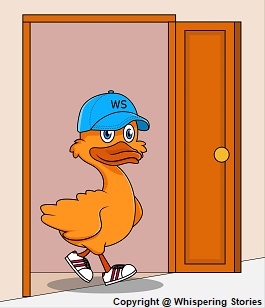
1) What’s your favourite food?
Indian curries. If I don’t get them at least twice a week, I get withdrawal symptoms.
2) If you had a box of crayons and you could only choose one, which colour would you choose?
Red. Always my favourite.
3) What movie could you watch over and over again?
Pakeezah, a classic Bollywood movie. Pakeezah means pure, and is about an orphaned dancing girl, who’s fallen in love with a man from an upper class family. It’s a truly sumptuous movie; full of music and dance, tragedy and love. I recommend it to everyone. It’s two and a half hours long and is the perfect movie for rainy afternoons, when you want to snuggle on the sofa with a hot cup of tea.
4) What would be the top song on your playlist?
Has to be Hallelujah by Leonard Cohen.
5) If you won millions, what would be your first purchase?
A yacht! A yacht! So I could sail round the world forever.
6) A talking duck walks into your room wearing a baseball cap and sunglasses, whats the first thing he says to you?
‘And your next two wishes are…?’
You can find out more about Ravinder by visiting her website/social media sites below.
www.ravinderrandhawa.com
@RealRavs
Facebook
Goodreads
I would like to say a very big thank you to Ravinder Randhawa for telling us all about her writing life.

